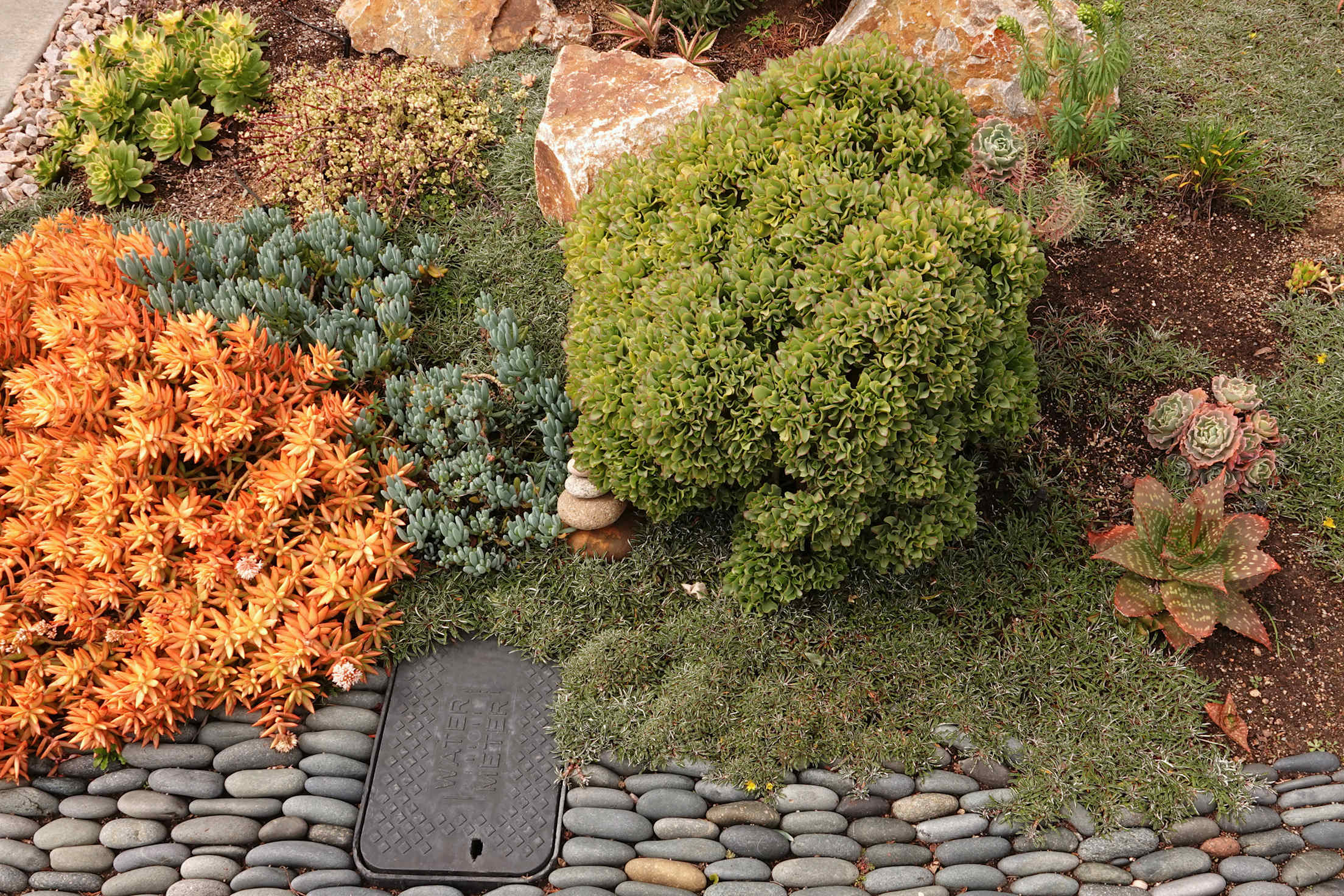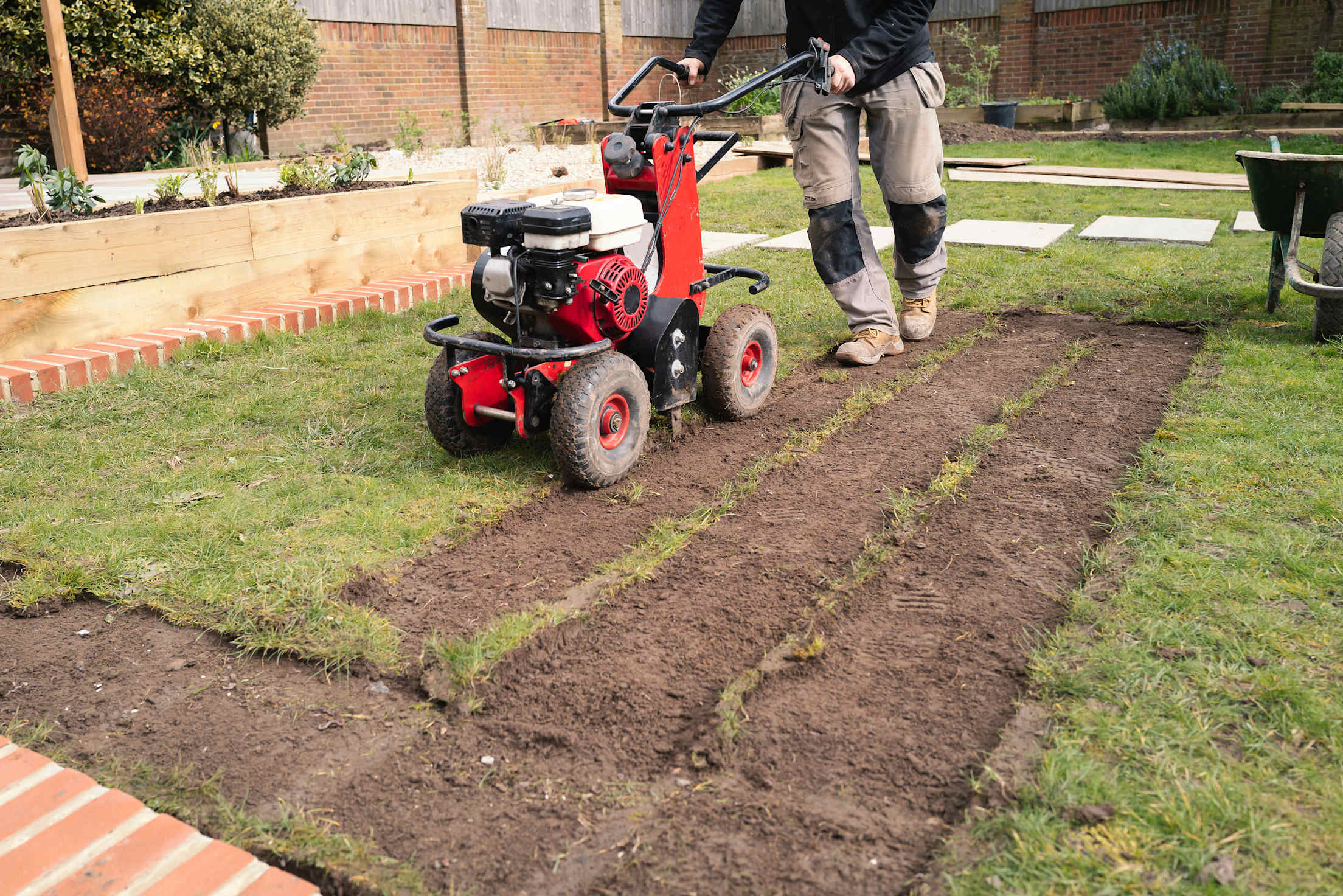
How to Replace Your Lawn With a Drought-Tolerant Alternative
Along with being a good environmental move, low-water plants can save you money.

Green grass has long been the default choice for homeowners’ yards, but there are plenty of beautiful and easy alternatives.
“From straight-up lawn alternatives like kurapia to more avant-garde plant choices like proteas, you can make it as traditional or weird as you want,” says Lara Hermanson, co-founder of Farmscape, an urban farming company in California. That is, you don’t need to worry about losing curb appeal with this transition.
And there are plenty of reasons why you might want to opt away from what Hermanson describes as that “green rectangle out front.”
3 Reasons to Replace a Lawn
1. Lawns are hard on the environment.
“It takes a lot of water to keep traditional lawns looking green and lush,” says Missy Gable, director of the University of California Master Gardener Program. And water is an important and scarce resource: Drought conditions are classified as severe in California, Utah, and Nevada, and more than 32 percent of the land in the West is under an “extreme or exceptional” drought, per the U.S. Department of Agriculture.
Since the roots of grass are only a few inches deep, sprinklers are required, which can mean a lot of water is lost to runoff or evaporation, Hermanson explains.
Every square foot of grass that’s replaced with desert-friendly landscape leads to saving roughly 55 gallons of water per year on average in Nevada, says Toby Bickmore, conservation services administrator with Southern Nevada Water Authority (SNWA), which administers conservation programs in the Las Vegas metro area. (Different areas may see different results, depending on climate.)
And grass can require a lot of chemical fertilizers, Hermanson notes. Not only are fertilizers a huge contributor to greenhouse gas emissions, but their runoff can pollute waterways.
Another environmental downside: “Grass doesn't support pollinators like birds, bees, and butterflies, which we know are critical to pollinating everything from flowers to the food we eat every day,” Hermanson says.
2. Lawns lead to high water bills.
In California, half the water used by homeowners goes to landscaping, according to the California Department of Water Resources. Replacing a thirsty lawn with something more drought-tolerant can reduce your water bill.
3. They require a lot of maintenance.
“Grass takes a lot of maintenance to keep alive, especially in the desert southwest,” Bickmore says. That means weekends spent mowing—or the expense of outsourcing the task to someone else. And gas-powered mowers contribute to carbon dioxide emissions, Gable says.

How to Replace Your Lawn
1. Look for rebates.
Do this first! If you remove your grass before applying for a rebate, you may not be eligible for it, since program administrators won’t be able to assess how much grass you had prior to your changes.
There are many rebate programs, Bickmore says. To find one near you, try searching online for “land conversion rebate” along with the name of your city, state, county, or water district.
2. Make a plan—and get help.
Start by looking for inspiration nearby. “Take pictures or make notes of what appeals to you aesthetically,” Gable says.
Whether you’re hiring a landscaper or transforming your yard on your own, look for resources that can help such as:
- Your local water district. Your water district likely has online resources and possibly even in-person help.
- An extension master gardener program. This “is a national network of University-trained gardeners who know best practices to have a successful garden and landscape,” Gable says—master gardeners live locally and helping is their goal. Search by your state.
- The National Wildlife Federation. See a list of native plants in your area, learn how to best support your local flora and fauna, and even get a certification that designates your yard as wildlife habitat with the NWF’s helpful online resources.

3. Choose replacements.
“There are wonderful low-water and low-maintenance planting options to keep your landscape looking top notch,” Gable says. “You can opt for another ground cover, you could put in a meadow of unclipped native grasses, or you could re-design your landscape with new planting areas full of woody and herbaceous perennials.”
Here are some options to consider—letting your particular climate and aesthetic preferences help steer your decision:
- Low-water plants. There are so many options here! “The salvia family is a great place to start,” Hermanson says. “This versatile low-water plant family comes in a million colors and sizes, and has pretty foliage as well as blooms.” You can also add trees. “Every yard could use a small-to-medium specimen tree, something like Arbutus Marina or a Eureka Lemon as a focal point,” she says.
- Drought-tolerant grass. Many native grasses require minimal water and stand up to your family walking on them. “Adding some grasses like lomandras or sedges will add some movement and evergreen color to your yard,” Hermanson says. You can get a large expanse of green through meadows or herbal lawn, too, per the California Native Plant Society.
- Natives. These often need little water once established and support pollinators and local wildlife.
Bottom line: Check what makes sense for your taste—and climate. For more intel, reach out to your local extension master gardener program, water district, arboreta and botanical gardens, or native plant associations, Gable suggests.
4. Design your hardscape and irrigation system.
Once you have a vision for your space, and a sense of what you’ll plant, plan your hardscape—aka the walkways, patios, and anything non-living in your yard—along with how you’ll convert your sprinkler irrigation system to a drip irrigation system.
“Drip irrigation is significantly more water conserving as it targets the delivery of water directly to the root ball of each plant,” Gable notes. Organizations offering rebates can likely help you determine best practices to update your irrigation.

5. Finally, remove your lawn.
“You typically don’t want to remove the turfgrass before having a plan in place because it can negatively affect the soil microorganisms that are a part of a healthy soil ecosystem, be unsightly, and foster growth of weeds,” Gable says.
There are several ways to get rid of your lawn (and no, you don’t need to use herbicide).
- Dig out existing turfgrass. “If you have newer sod, rent a sod cutter and cut it into strips that you can roll up. You can keep those rolls and use them on your landscape to make a berm or compost them on site, or rent a dumpster to get rid of them,” Hermanson says.
- Sheet mulch over the turfgrass. To do this, you’ll place cardboard across the entirety of the lawn and cover it with several inches of organic matter, such as wood chips, compost, planting soil, a thick pile of leaves, etc.
- Solarize the soil. The steps involved include smoothing the soil, wetting it, and then rolling clear plastic tarps on the surface and leaving them for up to six weeks during the hottest part of the year, according to the University of California Agriculture and Natural Resources. The downside is that the higher temperatures can kill the beneficial microbes and insects in the soil, and the plastic can create a lot of waste.
If you’re feeling overwhelmed, remember: you don’t have to do the whole project at once. “Many improvements can be done section by section,” Gable says. “If the scope seems too large, scale it back, take a phased approach, or hire a professional to help.”